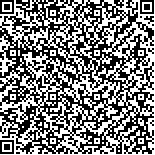凌雅,陈素红,王丹丹,赵东敬,倪宏.瘦素对新生期大鼠惊厥性脑损伤的康复作用及对皮质Drd2/cPLA2表达的影响[J].中华物理医学与康复杂志,2018,40(4):241-246
扫码阅读全文

|
| 瘦素对新生期大鼠惊厥性脑损伤的康复作用及对皮质Drd2/cPLA2表达的影响 |
| Leptin promotes the neurorehabilitation of seizure-induced brain damage |
| |
| DOI: |
| 中文关键词: 惊厥 瘦素 神经康复 胞浆型磷脂酶A2 多巴胺受体D2 |
| 英文关键词: Seizures Leptin Neurorehabilitation Cytosolic phospholipase A2 |
| 基金项目:国家自然科学基金(81471337) |
|
| 摘要点击次数: 6269 |
| 全文下载次数: 7756 |
| 中文摘要: |
| 目的 探讨瘦素对新生期大鼠惊厥性脑损伤的神经康复作用及对脑皮质多巴胺受体D2(Drd2)和胞浆型磷脂酶A2(cPLA2)表达的影响。 方法 采用随机数字表法将5日龄SD大鼠分为对照组、瘦素对照组、惊厥组及瘦素干预组。惊厥组和瘦素干预组大鼠于实验第6天给予氯化锂(212mg/kg体重)腹腔注射,24h后给予匹鲁卡品(320mg/kg体重)腹腔注射,在匹鲁卡品注射前30min给予氢溴酸东莨菪碱(1mg/kg体重)腹腔注射以拮抗其副作用。从实验第8天开始,瘦素对照组及瘦素干预组大鼠每日给予瘦素(4mg/kg体重)腹腔注射,连续注射7d。于实验进行23d时检测各组大鼠平面翻正、负向趋地反射情况,于实验进行30d时采用旷场实验评定各组大鼠认知情绪改变。于实验进行34d时取各组大鼠脑组织,采用实时PCR技术检测脑皮质中Drd2及cPLA2表达。 结果 4组大鼠平面翻正时间及负向趋地时间组间差异具有统计学意义(P<0.05);与对照组及瘦素对照组比较,惊厥组和瘦素干预组平面翻正时间及负向趋地时间均明显延长(P<0.05);与惊厥组比较,瘦素干预组平面翻正时间及负向趋地时间均明显缩短(P<0.05)。各组大鼠旷场实验开场得分组间差异具有统计学意义(P<0.05),与对照组和瘦素对照组比较,惊厥组和瘦素干预组开场得分明显降低(P<0.05);与惊厥组比较,瘦素干预组开场得分明显升高(P<0.05)。瘦素对照组、惊厥组和瘦素干预组Drd2表达均明显高于对照组(P<0.05);惊厥组和瘦素干预组Drd2表达较瘦素对照组显著增加(P<0.05)。瘦素对照组及惊厥组cPLA2表达均明显高于对照组(P<0.05);瘦素干预组cPLA2表达较惊厥组和瘦素对照组明显降低(P<0.05)。 结论 瘦素对新生期大鼠惊厥所致神经行为损伤具有神经康复作用,其作用机制可能与调节大脑皮质Drd2介导的cPLA2表达有关。 |
| 英文摘要: |
| Objective To explore the effect of leptin on neurorehabilitation and on the expression of dopamine receptor D2 (Drd2) and cytosolic phospholipase A2 (cPLA2) in the cerebral cortex after convulsive brain injury. Methods Five-day-old Sprague-Dawley rats were randomly assigned to a control group (CONT), a leptin injection control group (Leptin), a seizure group (RS), or a seizure with leptin injection group (RS+Leptin). The rats in the RS group and the RS+Leptin group were injected intraperitoneally with lithium chloride (5 mEq/kg) and pilocarpine (320 mg/kg) on day 6, and then scopolamine methyl chloride (1 mg/kg) 30 minutes later to block the peripheral effect of pilocarpine. The animals in the Leptin and RS+Leptin groups were then given leptin (4 mg/kg, i.p.) injections daily from days 8 to 14. The animals′ plane righting reflex and negative geotaxis reaction reflex were observed on day 23. The open field test was performed on D30. Real-time reverse-transcription polymerase chain reactions (RT-PCRs) were used to detect the expression of Drd2 and cPLA2 mRNA in the rats′ cerebral cortexes on day 34. Results There were significant differences in the plane righting times and negative geotaxis reflexes among the four groups, with those in the RS and RS+Leptin groups significantly longer than among the controls. Both reflexes were significantly quicker in the RS+Leptin group than in the RS group. There were also significant differences in the locomotor scores in the open field test among the four groups, with the average scores in the RS and RS+Leptin groups significantly higher than in the other two groups. The RS+Leptin group′s average was significantly higher than that of the RS group. The expression of Drd2 was significantly higher in the leptin, RS and leptin+RS groups than in the control group, and that of the RS and leptin+RS groups was significantly higher than that of the Leptin control group. The expression of cPLA2 in the Leptin and RS groups was significantly higher than in the CONT group, while that of the RS+Leptin group was significantly lower than in the Leptin and RS groups. Conclusions Leptin has a neurorehabilitation effect on the behavioral impairment caused by seizures, at least in neonatal rats. Its neuroprotective mechanism may be related to the regulation of Drd2-mediated cPLA2 expression in the cerebral cortex. |
|
查看全文
查看/发表评论 下载PDF阅读器 |
| 关闭 |